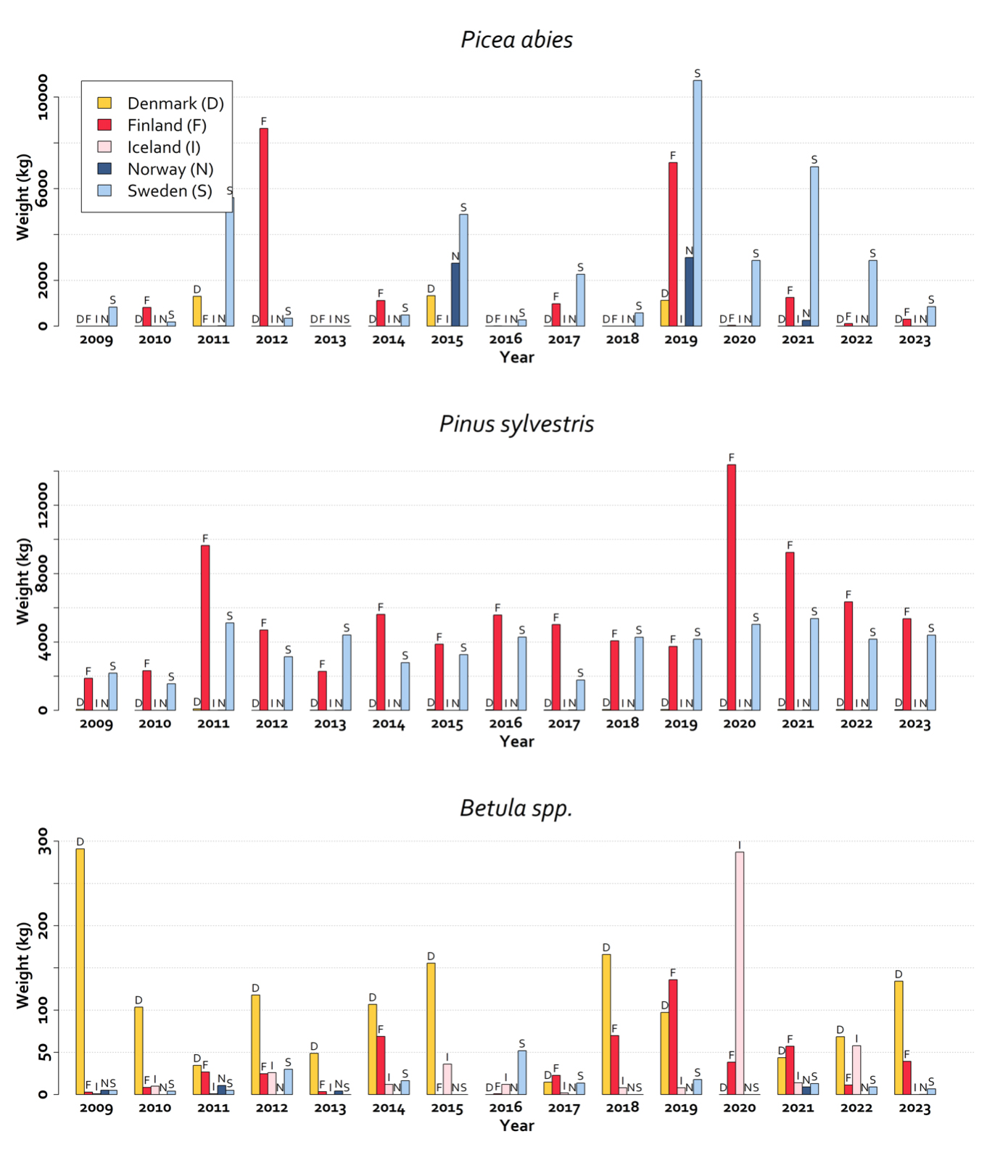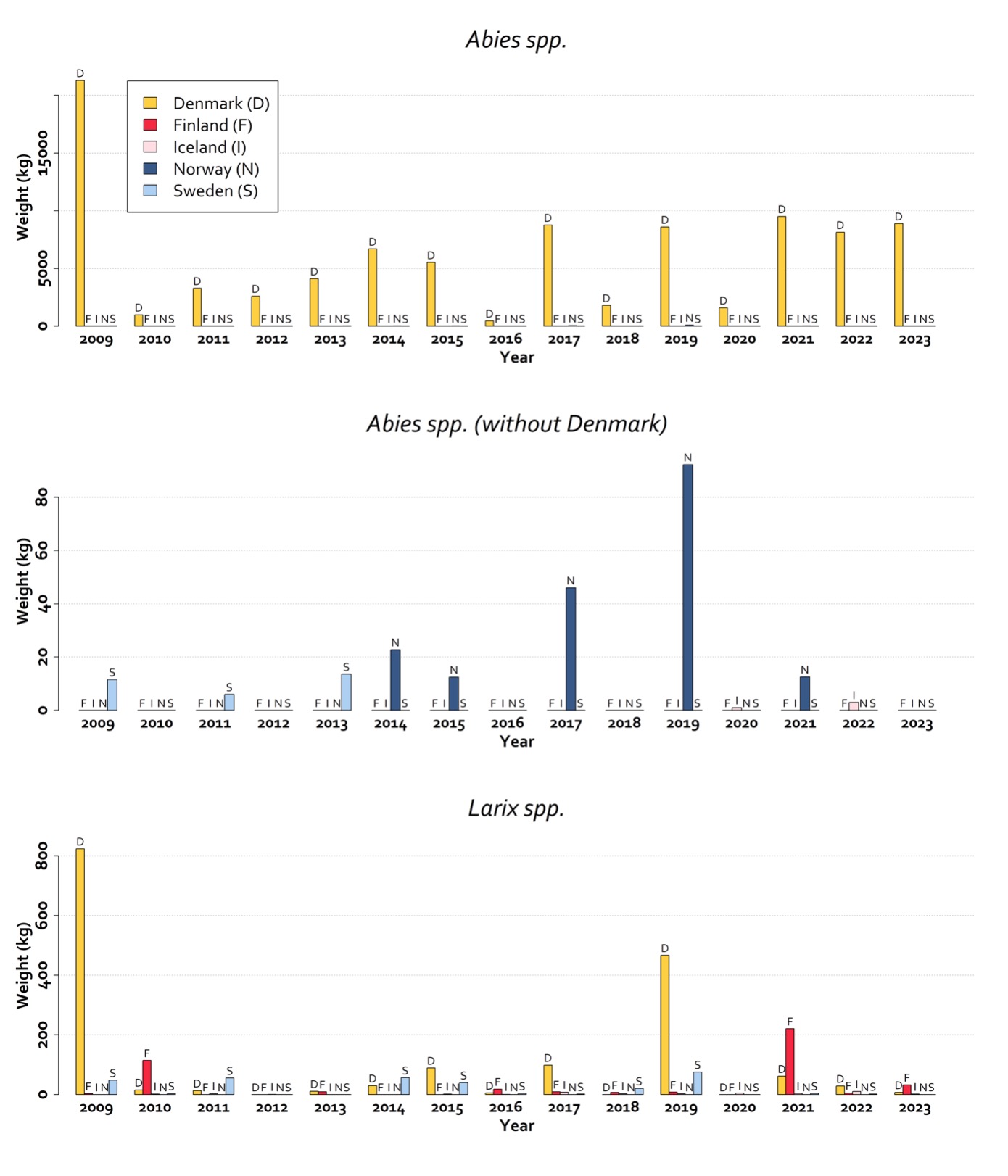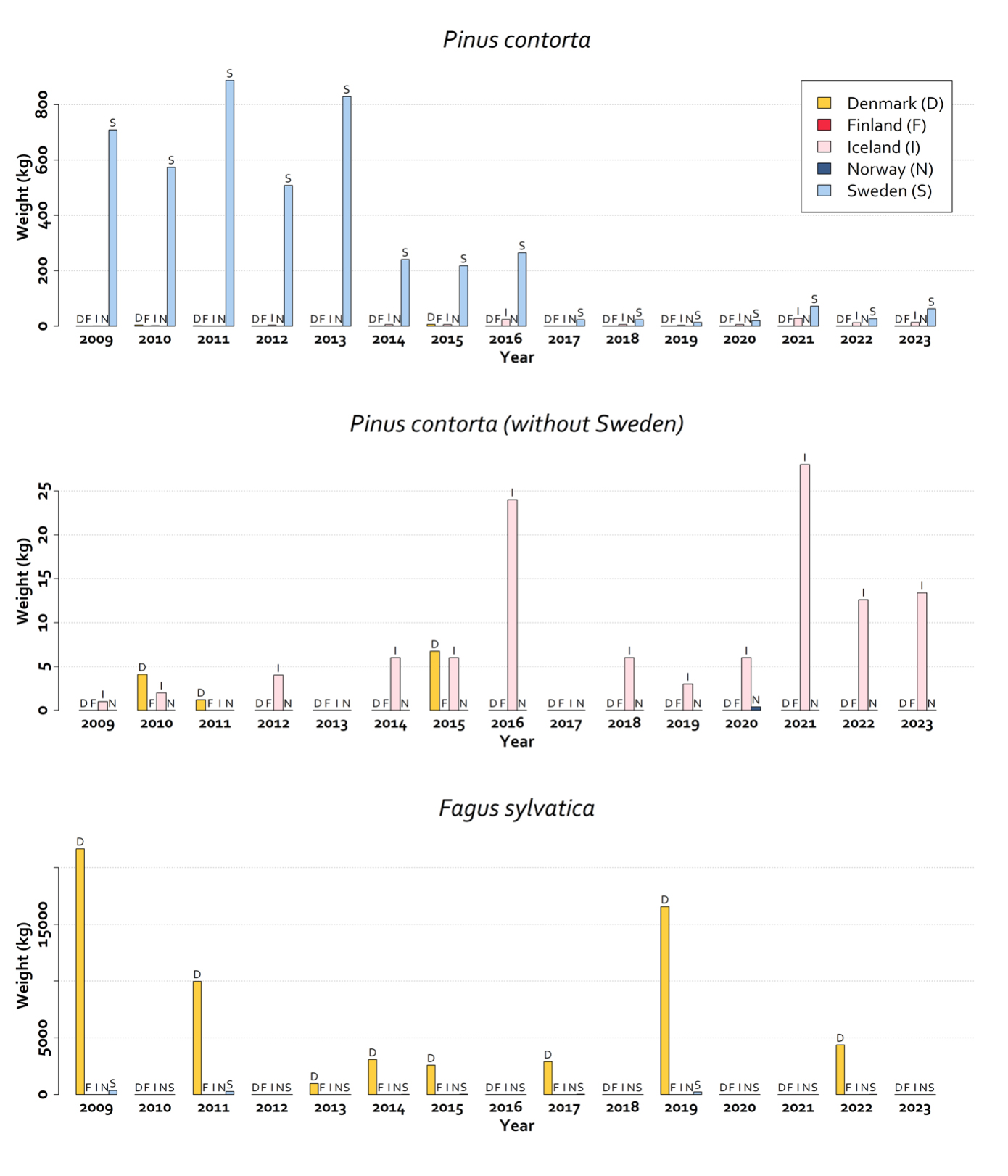
Seed production in the Nordic countries
Seed Production is presented below for the years 2009-2023, with data from all countries. The following categories are included in the figures: Norway spruce (Picea abies), Scots pine (Pinus sylvestris), birch (Betula spp.), firs (Abies spp.), larch (Larix spp.), contorta pine (Pinus contorta), European beech (Fagus sylvatica), oak (Quercus spp.), other conifers and other broadleaves. In 2023, there was notably high production of Quercus spp. seeds in Denmark
Scots pine seed, photo by Dan Aamlid, NIBIO.

Figure 26.
Figure 27-29 shows seed production for species in countries and years (year of ripening/harvest).
When comparing seed production in kg among species it is worth noting that seeds of different species can have very different weights.

Figure 27.

Figure 28.
Seed Quality
All seeds produced in the EU must come from officially approved and registered basic material, such as seed orchards or seed stands. A Master Certificate is issued to each seed lot after collection and is required for marketing forest reproductive material. It assures that seeds are collected from an approved basic material and include information on the type of basic material, phenotypic and genetic quality and origin of the material.
Forest reproductive material coming from countries outside the EU may be imported to and marketed in the EU if it affords the same assurances as the material produced in the EU, based on the OECD Certificate of Identity or Certificate of Provenance.
